NYC’s Forgotten ‘War on Christmas Trees’
Discover how an obscure holiday crackdown affects festive street vendors today!


Even if you’ve never been to Rockefeller Center, there’s a good chance that you are familiar with two of its most famous residents, Atlas and Prometheus. The two giant bronze sculptures are iconic symbols of John D. Rockefeller Jr.’s world-famous Art Deco complex. The shining gold Prometheus lounges in front of the ice skating rink in the Sunken Plaza, while Atlas kneels in front of the International Building at 630 5th Ave. While these two works of art are easily recognizable, you might now know that much about them. Let’s uncover their secrets!
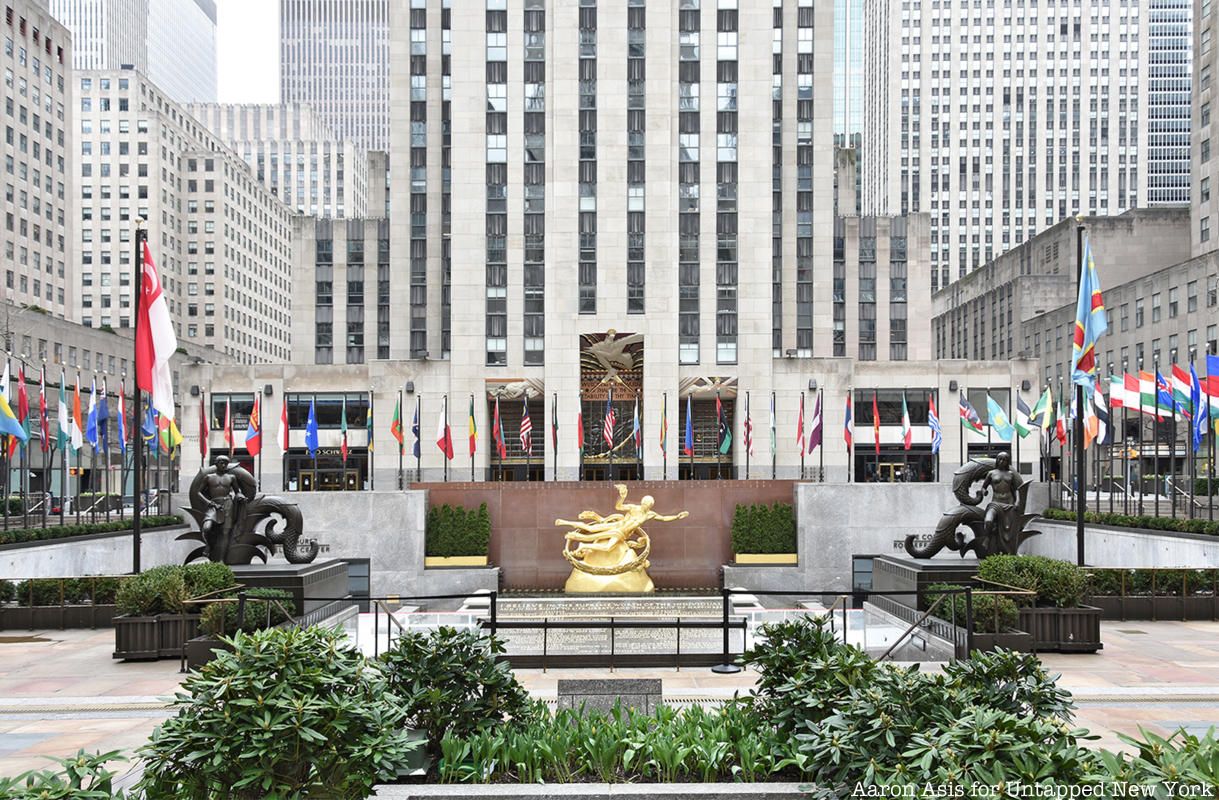
In Greek mythology, Atlas and Prometheus are both Titans and the sons of Lapetus and Oceanid Asia (or Clymene). In legend, they were both punished by Zeus for sharing knowledge with humanity. Atlas shared knowledge of astronomy which was used for navigation and Prometheus gave knowledge of fire. As penance, Zeus condemned Atlas to carry the weight of the heavens on his shoulders. To punish Prometheus, Zeus nailed him to a mountain in the Caucasus and sent an eagle to forever peck at his regenerating liver. Zeus also unleashed Pandora and her box of troubles into the world.
In artistic depictions, including their sculptural forms at Rockefeller Center, the brothers are depicted as strong and defiant as they endure their eternal punishments. A zodiac ring that can be found around both statues is a visual cue that ties them together. These depictions at Rockefeller Center are meant to indirectly represent John D. Rockefeller Jr., a “Titan” of industry who took on the task of building Rockefeller Center for the good of the city and its people.
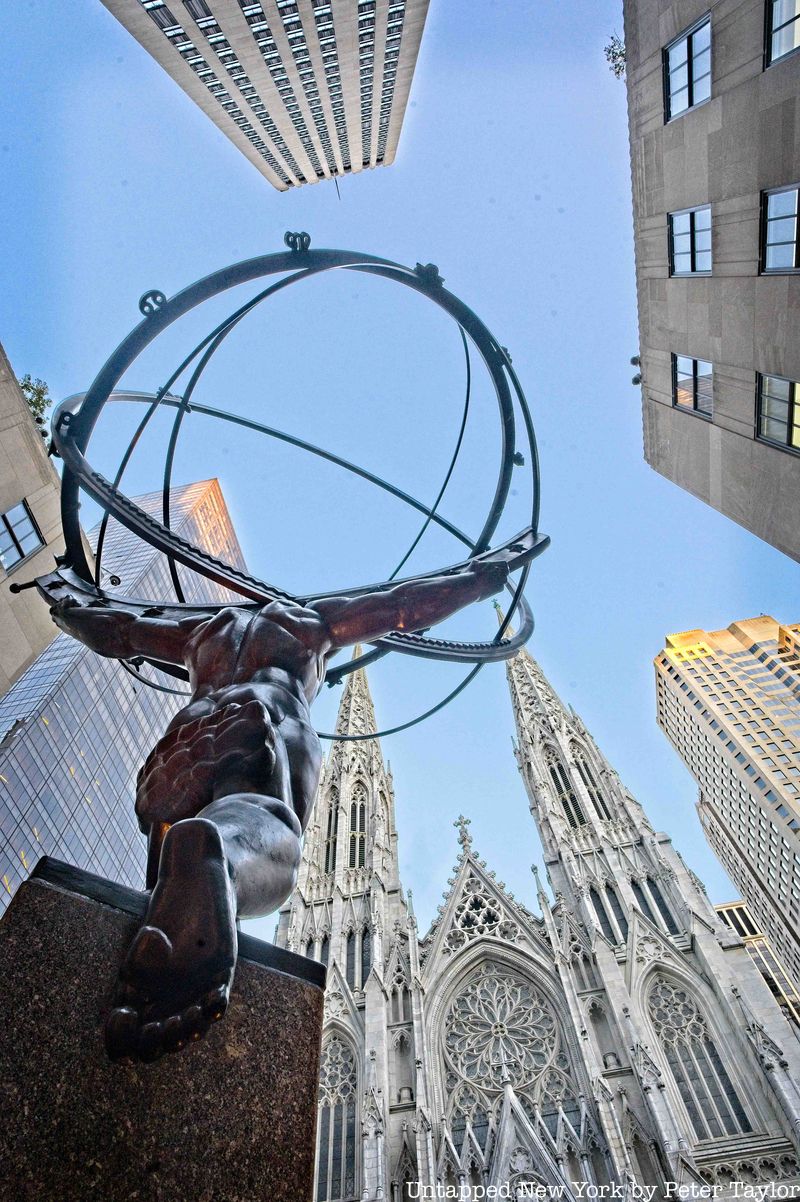
Atlas is depicted carrying the celestial vault or an armillary sphere on his shoulders. This type of sphere depicts the location of various celestial bodies. The north-south axis of this specific sphere on his shoulders points toward the North Star’s position relative to New York City.
The statue stands on one muscular leg atop a stone pedestal, whose corner faces Fifth Avenue. Behind the sculpture, you can gaze up through the sphere to the cloud-scraping top of 45 Rockefeller Plaza or to the glowing gold lobby of the International Building directly behind. Standing behind the sculpture looking out towards Fifth Avenue, the sphere frames a view of Saint Patrick’s Cathedral.

Atlas’ resemblance to the fascist Italian dictator Benito Mussolini, and more so the public’s reaction to it, have been largely exaggerated and turned into legend, though there were a few people who did note the resemblance. The New York Public Library did a deep dive into this topic and disproved the notion that New York’s Italian community protested the statue in the 1930s, as there are no reports of such demonstrations.
Instead, there are a handful of instances where individuals have pointed out the likeness. The most vocal opponent of the statue was James Montgomery Flagg, the creator of those “I Want YOU” army posters with Uncle Sam (whom Flagg modeled after himself). In an inflammatory 1943 New York Times article that outlined the findings of a self-appointed committee that determined the cultural value of New York City’s sculptures, Flagg said that Atlas’ stern face “looks too much as Mussolini thinks he looks.” Other committee members said that the statue “was nothing worthy whatsoever,” and was “bombastic and pretentious.” Atlas was one of many sculptures in the city the committee recommended be scrapped. Thankfully, the committee’s findings were not acted upon and Atlas still stands.
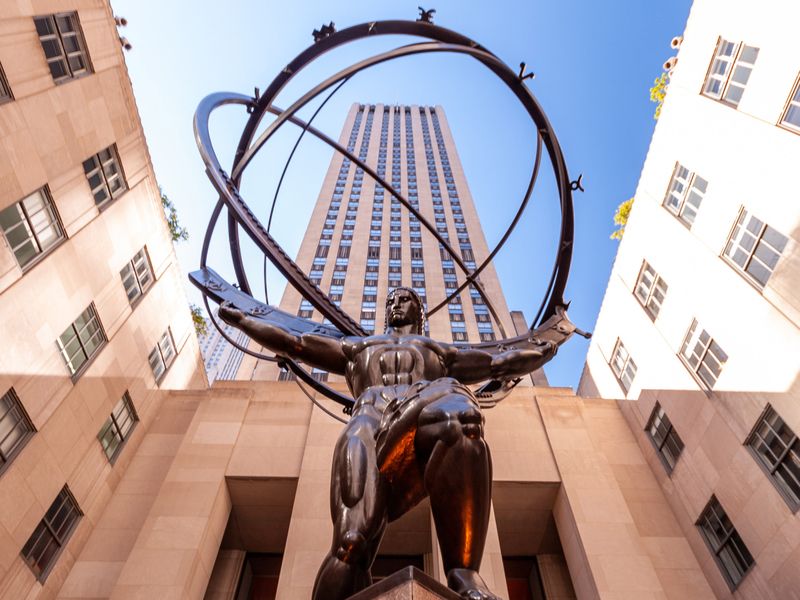
The Atlas statue is appropriately large for the god-like figure and is the biggest sculpture in the entire Rockefeller Center complex. The statue itself is 15 feet tall. Combined with the pedestal, Atlas stretches up 45 feet into the air, or roughly the height of a 4-story building! The giant celestial sphere that he holds measures 21 feet in diameter.
The Atlas sculpture was a collaboration between Lee Lawrie and Rene Paul Chambellan. Chambellan’s work can be seen all over Rockefeller Center. He created the fountainhead figures that spout water in the Channel Gardens and designed many of the relief sculptures on various Rockefeller Center buildings.
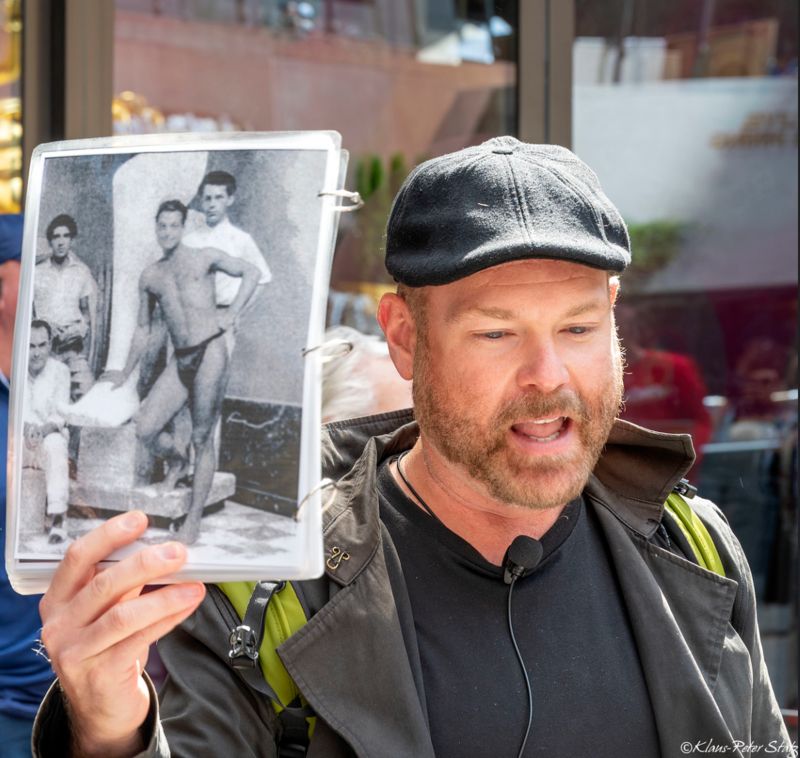
Leonardo Nole (c. 1907–1998), an Italian-American lifeguard from New Rochelle, modeled for the likeness of Prometheus. Nole had previous experience posing for college art classes. He spent three months posing for the Prometheus assignment in the spring of 1933. After World War II, he became a postal worker.
The Prometheus sculpture was created by famed sculptor Paul Manship. His assistant Angelo Colombo did most of the detail work on the sculpture while Nole was posing. Henry Kreis, another assistant, sculpted the hair.

The 18-foot-tall, eight-ton Prometheus sculpture is made of cast bronze, just like his brother Atlas. They look very different however because Prometheus is covered in shining gold leaf. Since the statue is so large, it takes nearly a pound of gold leaf to cover it.
The gold leafing has been restored multiple times since the statue originally debuted in the 1930s. Fritz Klueber, a German craftsman and specialist in gold leafing who worked on the restoration of the statue in 1974 told The New York Times that “the statue of Prometheus is rather unique because gold leafing on bronze is rare.”

Prometheus was greeted by a lot of criticism when he debuted, mostly because he is rather awkwardly posed. Some suggested that the Titan looks as if he is about to leap into the soup plates of restaurant patrons or alternatively, that he had just fallen from the top of the RCA Building.
The sculpture’s placement in a sunken plaza below a 70-story building presented significant problems. Manship himself lamented the fact that he didn’t have more time to study the placement. The fact that Prometheus is not overwhelmed by the towering architecture that surrounds it is a considerable tribute to the decorative merit of the bronze sculpture.
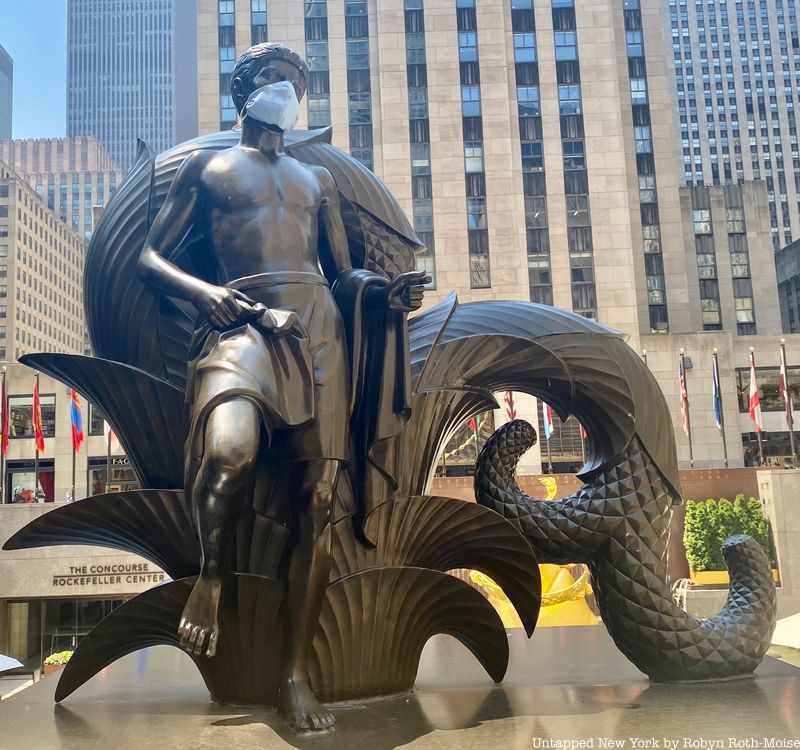

In addition to the colossal Prometheus statue, Manship also created two complimentary sculptures called Youth and Maiden. These Mankind statues were also gilded and initially meant to flank Prometheus on granite shelves. However, when he saw all three sculptors together, Manship thought the proportions were wrong and he had them removed.
The sculptures eventually found a home atop the roof garden of the British Empire Building where they stayed until 1983. At that time, they were brought back to the skating rink temporarily. In 2001, the statues were restored to a natural bronze finish and installed at the top of the stairs leading down to the sunken plaza and they are designed to announce Prometheus
Next, check out the Top 10 Secrets of Rockefeller Center
This article was written by Nicole Saraniero and Justin Rivers
Subscribe to our newsletter